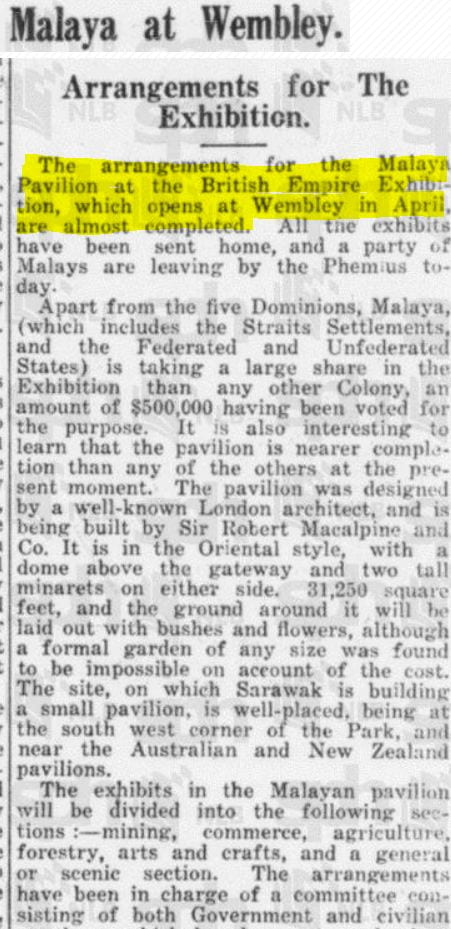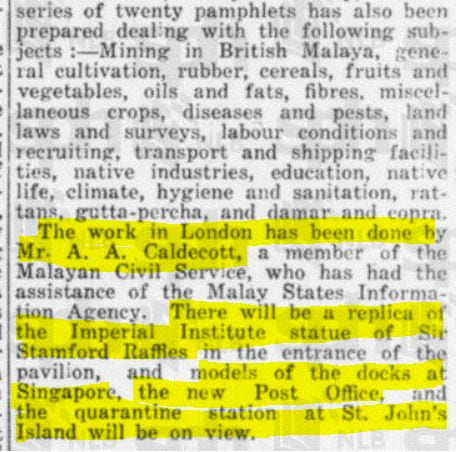In 1874 (November), St John’s Island became a quarantine centre when, a year earlier, a severe cholera epidemic broke out which claimed the lives of 357 people.[1] This prompted Andrew Clarke, who was then the British Governor in Singapore, to approve a proposal made by Acting Master Attendant Henry Ellis to establish a lazaretto on St. John’s Island. (A lazaretto is a facility to isolate and treat patients with contagious diseases and possibly how Lazarus Island got its name). For the most part, the quarantine station was able to accommodate, within its camps, up to 6000 residents (suspected to be) infected from smallpox, cholera, chicken pox, measles and other related diseases.
It opened just in time in 1874 to take in more than 1000 Chinese passengers from the cholera stricken S.S. Milton arriving from Swatow in China (now Shantou).
While most of its inhabitants were new immigrants harking largely from China and India, the station also saw returning Muslim pilgrims from the Hajj in Mecca, as well as Japanese and Europeans coming through its doors.
By 1935, St. John’s Island the quarantine station had grown to become ‘the largest quarantine station in the world’ and was even compared to New York’s Ellis Island and El Tor in Egypt. As the biggest quarantine station throughout the British Empire, a giant model of it was also created and put on display at the British Empire Exhibition in 1924!
There were also barracks and a temple for the men of the Sikh Police Force stationed on the island, a gardeners’ quarters and mosque for the Muslim inhabitants, a coolies’ and workmen’s quarters, as well as a Coroner’s court and a lock-up.
Over the years, the quarantine station could have also seen improvements done in response to its critics, such as the Chinese Advisory Board who wrote in about dismal conditions such as in terms of poor lighting, overcrowded living arrangements, limited water, and improper death procedures.
While a burial ground for those who died while at the quarantine station was planned to be set up on Peak (or what is today Kusu) Island, Lazarus Island eventually became the final resting place of those who succumbed to their diseases, when Chinese leaders, such as Cheang Hong Lim, opposed the idea of Kusu, an island of pilgrimage for many years, into a cemetery. As Cheang Hong Lim (1875) said:
‘…a small island called Peak Island, lying opposite to this colony of Singapore, has, for upwards of thirty years been used by many of the Chinese and native inhabitants of this Settlement as a place for them to resort to at certain periods every year, for the purpose of making sacrifices, and paying their vows to certain deities there called ‘Twa Pek Kong Koosoo’ and ‘Datuk Kramat’, and as that place has lately, to the great prejudice of their feelings, been desecrated by the internment therein of a number of dead bodies. Your Petitioner is desirous of applying for a Title to the same, in order to prevent that place from being any longer used as a Burial Ground’.
Class played an important role in the ways in which the newcomers to Singapore were treated whilst at the quarantine station. While those from the first and second class cabins of the ships were subjected to quick checks, after which they were allowed to continue on to the mainland, others, especially those from the lower decks of the incoming ships, had to stay for a few days or even up to a week (Teo and Chew, 2004). Upon arrival, the newcomers were sprayed with disinfectant within a warehouse (now demolished) located near the jetty of St John’s Island and, if needed, were accommodated in the barracks provided. According to oral accounts, while some of its residents had pleasant memories of their quarantined stay on the islands, particularly as conditions were comparatively better than when they were in the ships coming here, others found it oppressive, inhumane and humiliating. For sure though, the existence of the station prevented major infections from reaching the mainland.
‘Quarantined on Kusu Island (later in the interview, he clarified that he had meant St John’s Island) as the British thought that there were germs on the lower berth of the steamer that might lead to infectious diseases. Only those on the lower deck were quarantined. Those who stayed in the cabins did not have to go. There was a class distinction… Being quarantined on Kusu Island was inhumane. We were bossed around like chickens and ducks. The British saw us Chinese as beasts. After being given some rations, it felt like we were camping – we had to cook and eat there. I was quarantined for two days before being released’
Teo Choon Hong (1983), arrived from Amoy or Xiamen in 1937
‘Every batch of people who came here had to stay at Qizhang Hill for a short three to five days, so as to ensure that there were no infectious diseases and such. After three or five days, I was allowed ashore… We had three meals a day. Breakfast consisted of bread and milk tea. There were two small slices of bread. At that time, it was not enough. Then in the afternoon, it was lunch, and at night it was dinner. The meals all had eggs, and some stir-fried vegetables and fish. We had two time slots a day to shower, because at that time, the weather was hotter, hotter than now. It made us more comfortable. Living quarters-wise, there were many people living together in a big hall’
Teong Eng Siong (2002), arrived from Foo Chow or Fuzhou in 1948
‘[St John’s Island was an] isolated place… We were locked up in the camp… We were given rations, firewood, pots to cook and prepare our own food. It gave me a sort of fright there because of centipedes, cockroaches’
Saravana Perumal (1983), from Jaffna, Ceylon, 1947
Another newspaper wrote:
‘With thousands of Chinese arriving at Singapore every week, and with smallpox on two out of every four immigrant ships entering the port, Singapore and the Peninsula are nevertheless kept practically free from that disease… Certainly the treatment which the immigrants received on the island is about as pleasant an introduction to Malaya as they could expect. They arrive hungry, dirty and miserable after a deck passage through the China sea, and they spend five blissful days – or it may be a fortnight – with nothing to do, wholesome food to eat, and the beaches of the island on which to lounge away the first hours of leisure they have known in their lives’ (The Singapore Free Press and Mercantile Advertiser, 30 April 1926).
This function of St John’s continued even after Singapore gained independence in 1965, especially for immigrants coming in from China and India.By the 1970s, due to the decline in mass immigrations, the rise of airplanes as a quicker mode of transport, improved conditions of the ships bearing new arrivals to Singapore and the advent of official health certifications from source countries (such as China and India) that made additional systematic checks at the points of arrival (i.e. Singapore) redundant, the quarantine station was subsequently closed on 14 January 1976.
As to why the quarantine station closed, Cik Jalil added on: ‘At that time, the quarantine centre was already redundant due to the advent of the use of the airplane for travel. Nobody used ships to transport people anymore. The quarantine centre was shifted to Paya Lebar airport where people travelled there’.
[1] 1848 – St John’s = to be for the segregation of leper convicts – the subject was raised again in 1857 when leprosy became a major problem in Singapore but this did not happen.




Leave a Reply